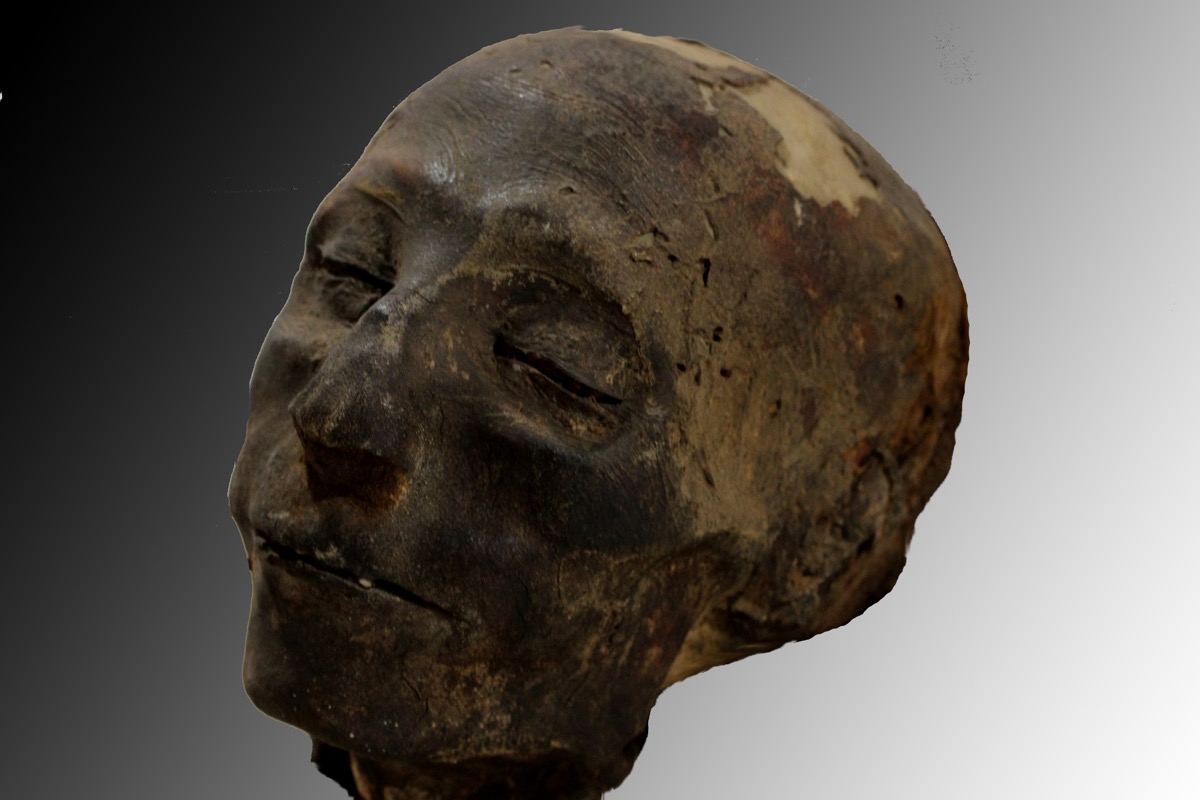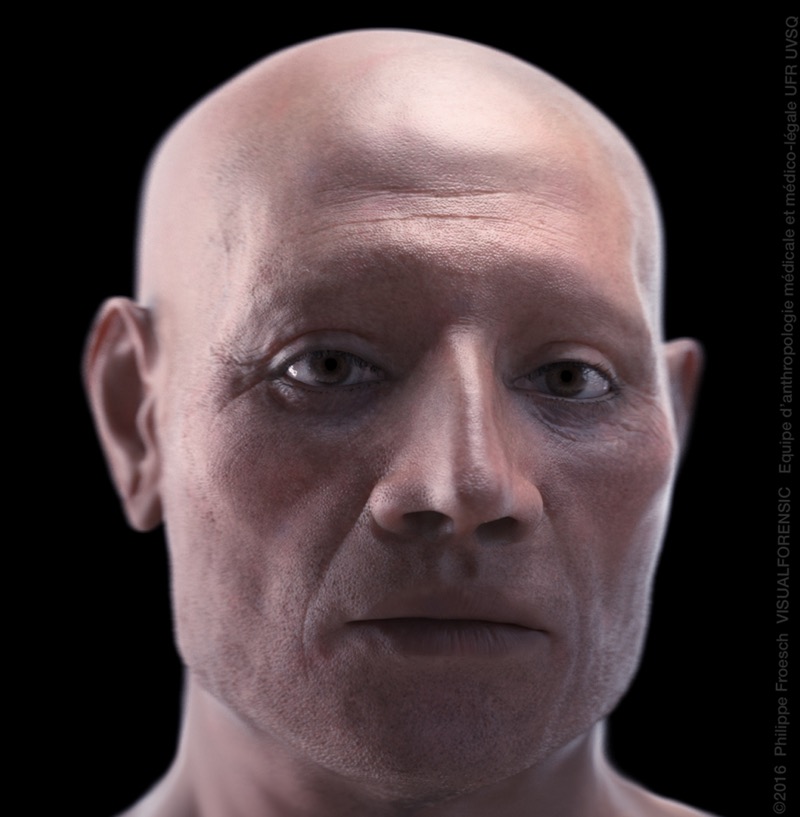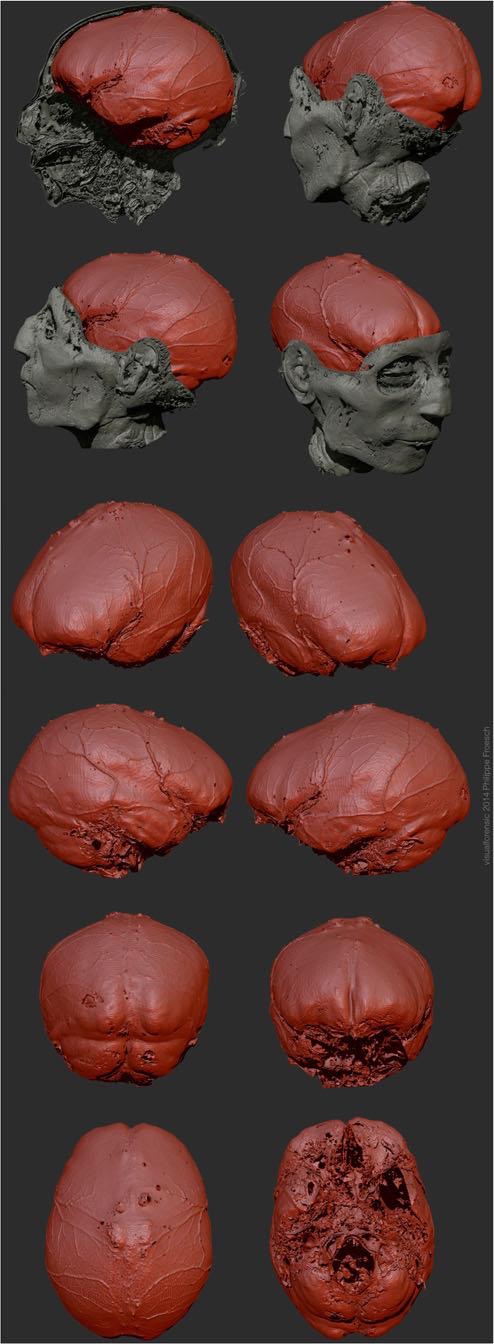The Mummy Returns: Egyptian Dignitary's Face and Brain Reconstructed

An international team of researchers has reconstructed the face and brain of a 3,500-year-old Egyptian mummy, revealing a unique "packing" embalming treatment.
Consisting of a well-preserved head and canopic jars containing internal organs, the remains belong to Nebiri, an Egyptian dignitary who lived under the reign of the 18th Dynasty pharaoh Thutmoses III (1479–1425 B.C.).
Nebiri's mummy became famous two years ago when he was diagnosed with the oldest ever case of chronic heart failure. [Photos: The Amazing Mummies of Peru and Egypt]
"He was between 45 [and] 60 years old when he died," Raffaella Bianucci, a bioanthropologist in the Legal Medicine Section at the University of Turin, told Live Science. "His tomb in the Valley of the Queens was plundered in antiquity and his body deliberately destroyed."
In 1904, Italian Egyptologist Ernesto Schiaparelli found what remained of the mummy, now housed at the Egyptian Museum in Turin.
Now, after his desecration, Nebiri has been brought back to life through modern forensics. Using a type of computed tomography and facial reconstruction techniques, the researchers produced an impressive facial approximation.
Nebiri appears as a man with a prominent nose, wide jaw, straight eyebrows and moderately thick lips.
Sign up for the Live Science daily newsletter now
Get the world’s most fascinating discoveries delivered straight to your inbox.

"The reconstruction is nice, but this is not just art in my eyes," Philippe Charlier, a forensic pathologist and physical anthropologist at the University of Paris 5, told Live Science. "It is a serious forensic work based on the latest techniques of facial reconstruction and soft tissues over skull superposition. Beyond beauty, there is anatomical reality." [Image Gallery: The Faces of Egyptian Mummies Revealed]
Preliminary chemical data presented at the World Mummy Congress held in Rio de Janeiro in 2013 showed that the linen bandages had been treated with a complex mixture of an animal fat or plant oil, a balsam or aromatic plant, a coniferous resin and heated Pistacia resin. The recent CT scans revealed the bandages were carefully inserted almost everywhere in the head, in the nose, ears, eyes and mouth.

Nebiri's mummified head is the result of a "perfect packing," Bianucci, Charlier and colleagues explained in a paper published in the journal Forensic Science, Medicine and Pathology.
Additional packing was introduced into the mouth to fill the cheeks.
"The meticulous packing created a barrier to protect the body from insect colonization. At the same time, it had a cosmetic purpose, allowing the facial features and neck to maintain their original lifelike appearance," Bianucci said.
Intriguingly, CT scans showed a tiny hole in a honeycomb-like bone structure known as the cribriform plate, which separates the nasal cavity from the brain. However, the brain was not taken out.
"Given the meticulous treatment of the head, it can be speculated that the perforation of the cribriform plate was not performed to extract the brain, but to insert the linen packing," the researchers wrote.
Indeed, fragments of linen strips can still be seen within the dehydrated cerebral tissue.
Using data from the CT scan, the researchers could perform a 3D brain surface reconstruction, which allowed them to reconstruct soft tissues destroyed or modified by post-mortem alterations.
"No anatomical anomalies were detected," Bianucci said.
The elaborate treatment of the head is like the embalming found in the nonroyal couple Yuya and Thuya, the researchers noted. DNA analysis conducted in 2010 identified the couple as the great-grandparents of Tutankhamun.
"We were able to add strength to the argument that Nebiri was [a] high elite," the paper's first author, Robert Loynes, at the KNH Center for Biomedical Egyptology at the University of Manchester in England, told Live Science.
Loynes noted the head is a rare example of a high-status funerary treatment of an early 18th Dynasty nonroyal individual.
"It's a unique finding that predates the developments seen in later 18th to 20th Dynasty kings, queens and kin," Loynes said.
Dario Piombino-Mascali, an anthropologist at the University of Messina in Sicily, who next month will begin a mummy field school in Sicily (giving students field experience investigating mummies), found it striking that the head alone could reveal so much about mummification.
"Using a combination of non-invasive techniques, the researchers have been able to find a particular treatment of the brain, which did not require its removal," Piombino-Mascali, who is not involved in the study, told Live Science.
At the crossroads of forensic anthropology and osteo-archaeology, the research opens new possibilities for the study of mummies.
"The brain reconstruction was produced from the Dicom file of the CT scan and, therefore, could be reproduced on any other mummy which had been CT scanned," Loynes said.
Original article on Live Science.









